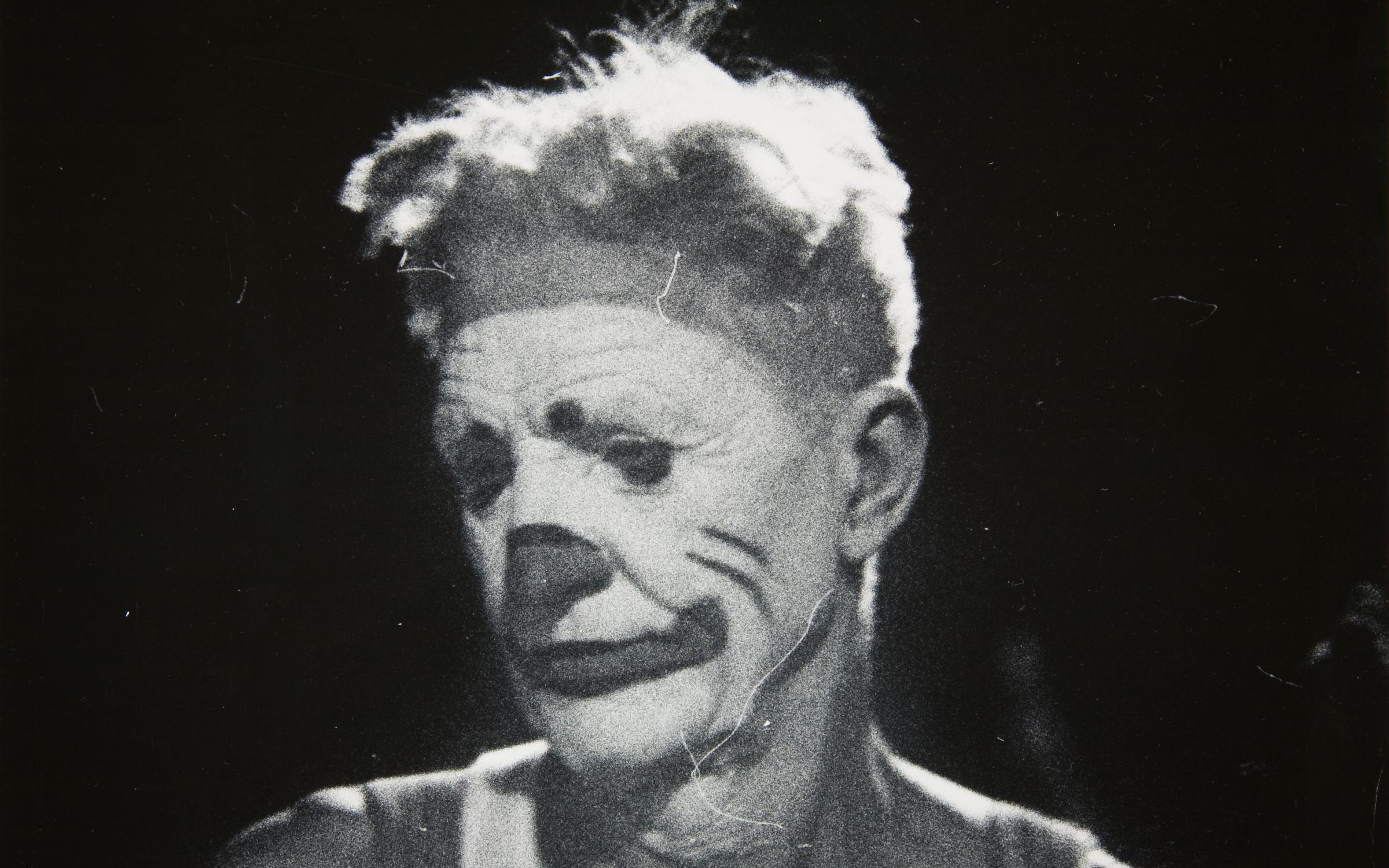
A Behind-the-Scenes Peek at the Fools and Clowns in UMFA Collection.
By J. Attridge, UMFA Communications Coordinator and clown enthusiast.
What secrets lie below the UMFA? Believe it or not, only a small percentage of the Utah Museum of Fine Arts’ collection is on view at any time. For various reasons, many of the art objects in any museum’s collection must be kept off view for varying amounts of time. As of writing this, approximately 21,513 art objects are hidden in the “dungeon”–rather, a meticulously kept depository– of the UMFA. Among the temperature and humidity controlled shelves, reside some depictions of fools and clowns, which we will explore and celebrate this April Fool’s Day. ‘But why are they hidden?’ you may ask. ‘Are they cursed?’ The answers to those excellent questions lie here. This blog post will grant you a peek at some of the UMFA’s off-exhibition collection and guide you through the history of clowning and tomfoolery.
Two Truths and a Lie: (Find the answer at the end.)
-
In some societies, fools have been considered to have prophetic powers.
-
“Tomfoolery” is derived from the name Thome Fole.
-
Early Greek fool figures would pelt their audience with nuts.
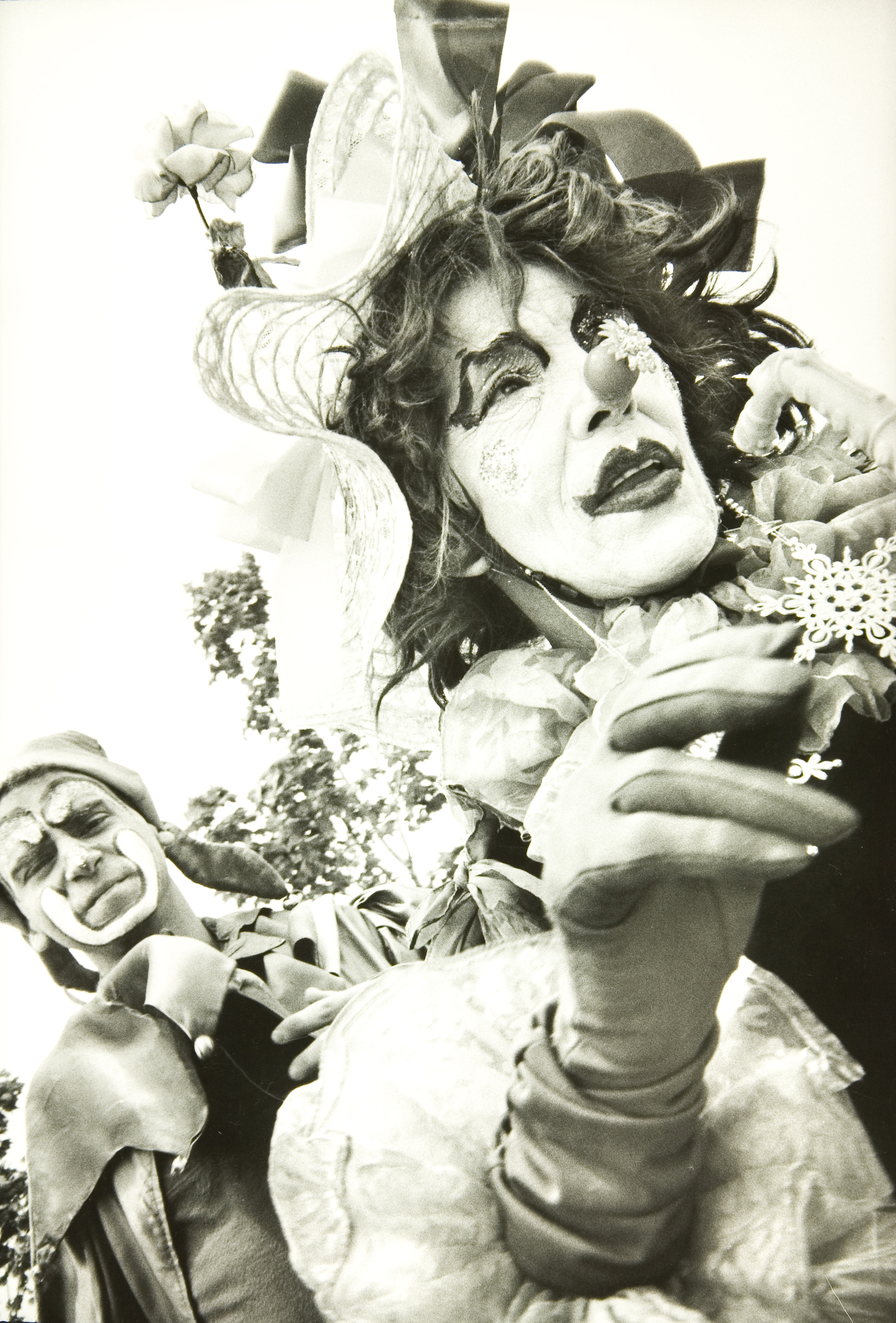
For many Americans , the words ‘fool’ and ‘clown’ conjure images of court jesters from medieval Europe or white-faced circus clowns like those seen in the photograph above. (Many of us also shudder at the thought of Stephen King’s It at the mere mention of clowns, but, let's not think about that.) Clown, NYC by Ken Heyman appears to have captured examples of two types of clowns. In the foreground, we see a whiteface clown, and in the background, we see an example of an auguste clown. According to Tom Raymond, blogger and professional clown of 25 years, whiteface clowns are typically the ringleader of a band of clowns and are costumed either “outlandishly” or “snazzily.” Alternatively, an auguste clown is not leader-material and is known for a lack of intelligence. Auguste-style makeup starts with a natural skin base over which the exaggerated eyes and mouth are painted. These types of fools are commonly seen in the US today, but fool figures have taken many forms throughout history and throughout the world. Some of the earliest recorded examples of fool figures were Greek ‘baffoons’ and the court fools of Egypt during the fifth dynasty.
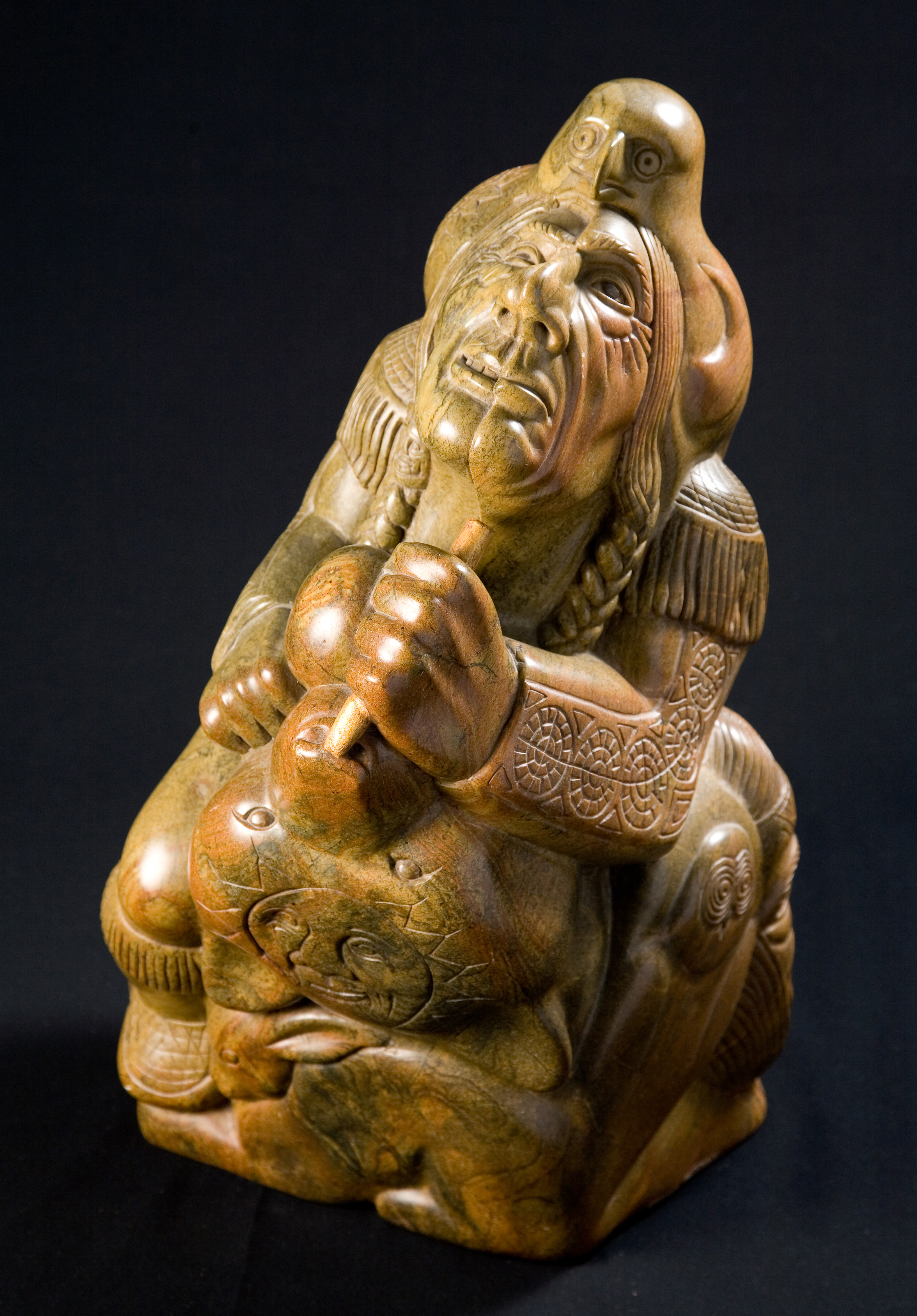
Allow me to introduce you to a few more fools in the UMFA collection! The above soapstone carving Stone Pounder was created by Cree/Canadian artist Graham Pettman. He described it as “ a continuation of the May-May-Quay-She-Wik (Cree little people) series using the split face characteristic... In this piece, the trickster (fool) and the wise man (realist) are paired to complete the contradicting facets of the human equation.” One trickster in Cree storytelling is Wesakechak, who is a shapeshifter and friend to humankind. The spelling of his name differs frequently, including “Whiskey Jack”, because Cree was initially an unwritten language and English speakers spelled Cree words how they heard them. The correct Plains Cree pronunciation is close to “wee-sah-keh-chahk". In one story, Wesakechak set his own rear on fire to punish it for farting when he was trying to hunt.
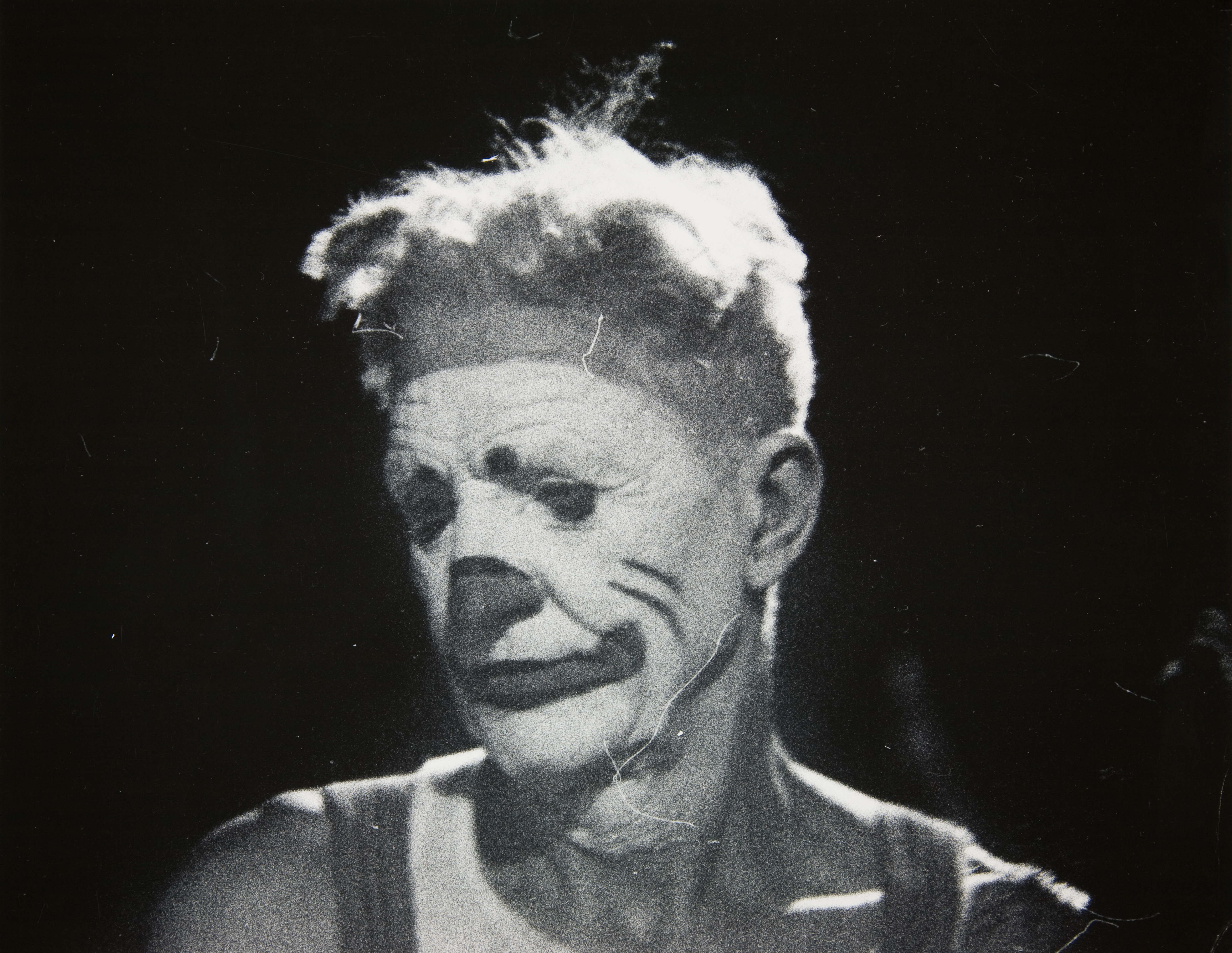
This photograph was created by artist Giorgina Reid sometime between 1950 and 1970. The subject appears to be a ‘whiteface’ clown but without the customary attire or confident demeanor. This clown appears downtrodden and out of costume. Coincidently, both whiteface clowns and the phenomena of sad clowns can be traced back to Italian and French influence. This influence comes from the character of Pierrot, also known as Pedrolino. This clown could be recognized by their bald head and flour-whitened face. Pierrot was created in the latter part of the seventeenth century and was initially only meant to be the butt of Harlequin beatings and antics. (The Harlequin, of commedia dell’arte, shoulders the very important responsibility of slapping posteriors with a bat or slapstick.) Over time, however, the character of Pierrot became more lovesick and melancholy. This sentimental side remains a part of the modern clowning tradition today.
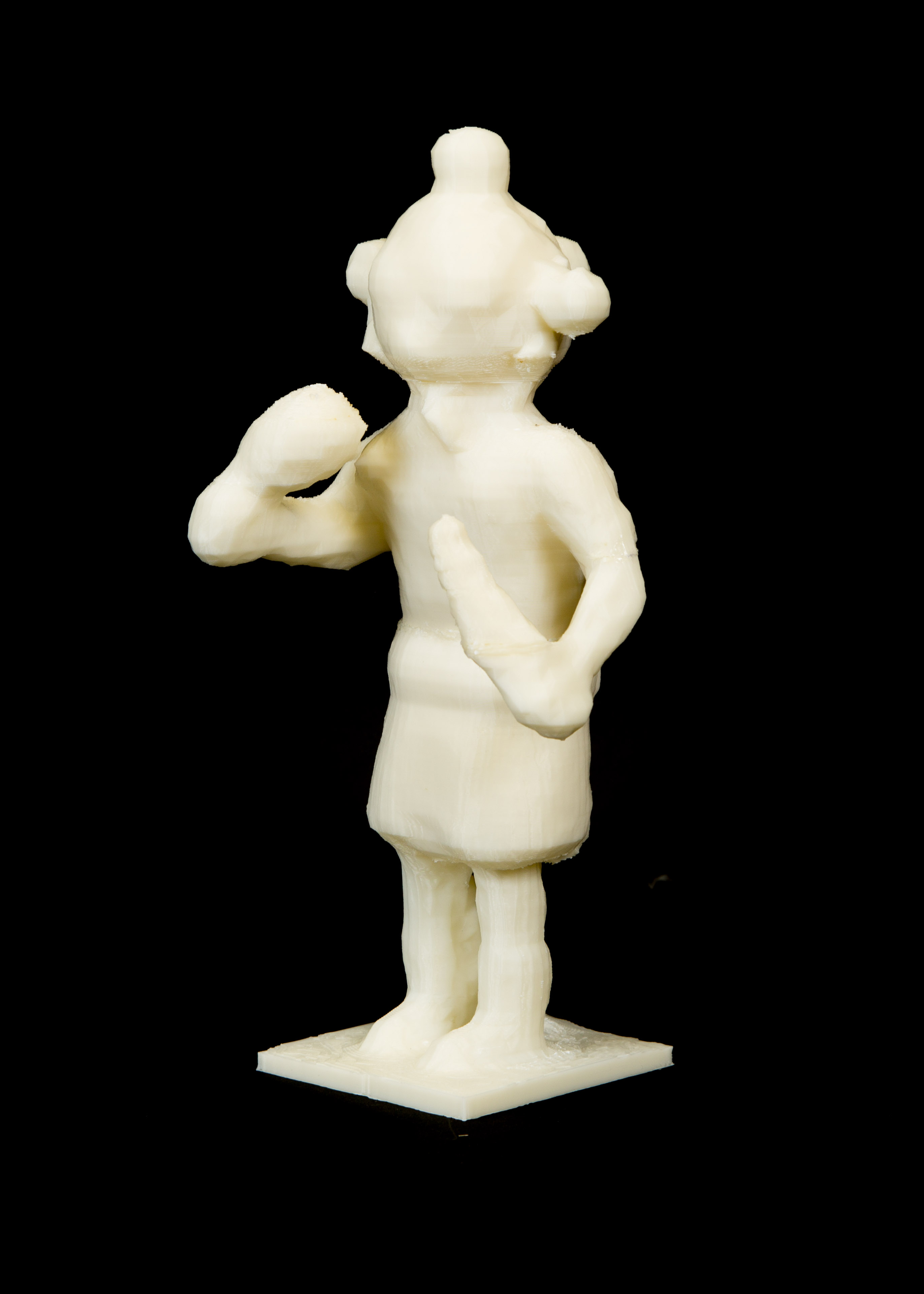
The above ABS plastic sculpture was created by the Omaskêko Ininiwak artist Duane Linklater. It is a 3D print of a wooden statue that depicts a Koyemsi. According to a Guide to Hopi Kachina Dolls, “The Koyemsi, or Mudhead Kachina, is a clown who may be seen in most Hopi ceremonies. Mudhead Kachinas drum, dance, play games with the audience, and may act as announcers for events. They often give prizes or rewards for the races and guessing games they organize. The term "mudhead" comes from their masks which have mud applied to them.”
Fools and clowns have always held an important cultural place in society. They entertain us, are the subjects of comedies and cautionary tales, and in some cases they adorn the walls of creepy hotels. Likewise, these fools hold an important place in the UMFA collection. I hope you have enjoyed this sneak peek into the fools of the UMFA. If you’d like to explore more of what the UMFA has off-view, you can search the collection database here. If you’d like to see some art in-person, Clown and Horse by Miné Okubo is on view in Pictures of Belonging: Miki Hayakawa, Hisako Hibi, and Miné Okubo now through June 30, 2024.
Two Truths and a Lie: (Answer)
April Fools! All three tidbits are true! According to Britannica and the Merriam-Webster dictionary:
-
“Fool figures played a part in the religious rituals of India and pre-Christian Europe, and, in some societies, such as that of Ireland in the 7th century BC, they were regarded as being inspired with poetic and prophetic powers.”
-
“Tomfoolery” is derived from the name Thome Fole, which was used in the Middle Ages for people considered to have little intelligence. This evolved into ‘Tomfool,’ used as a title for professional clowns in plays or pageants.
-
“The earliest ancestors of the clown flourished in ancient Greece—bald-headed, padded buffoons who performed as secondary figures in farces and mime, parodying the actions of more serious characters and sometimes pelting the spectators with nuts.”
